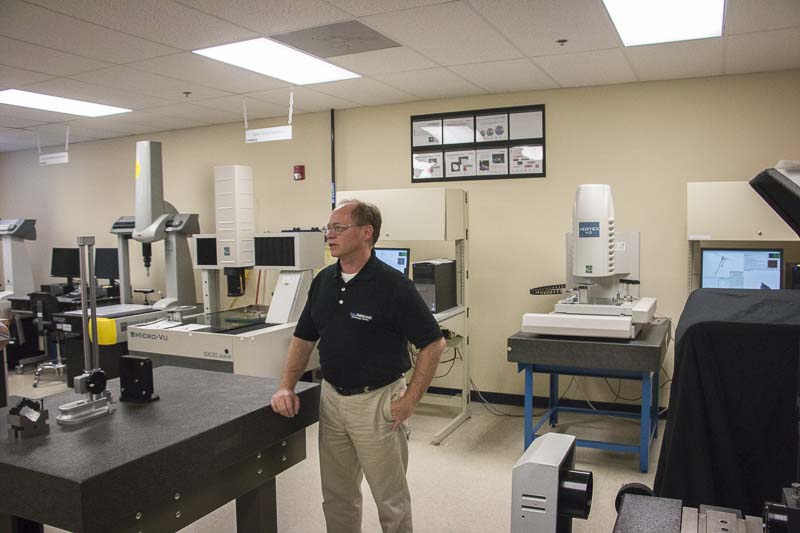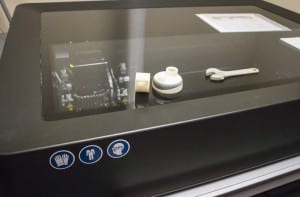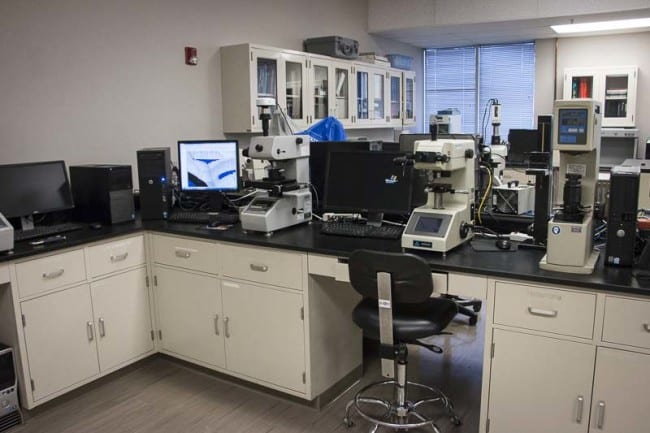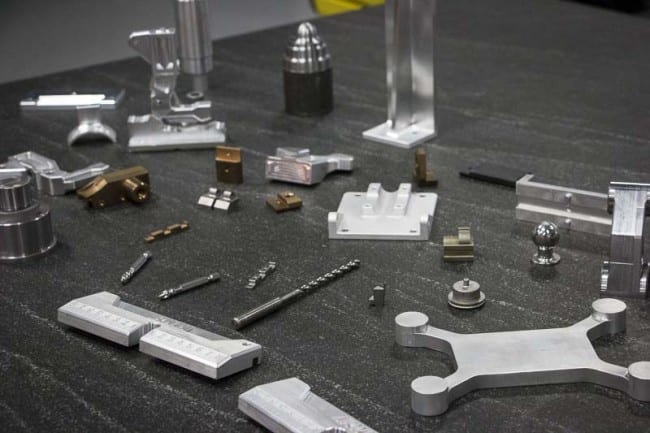I love seeing how companies test tools. It’s fascinating, and I typically come away with new ideas on how to better control the testing or put tools through more rigorous challenges with each new testing center I visit. I’ve been in facilities run by DeWalt, Ridgid, Milwaukee Tools, Festool, and others. On this trip we visited North Carolina where we checked out the Irwin Learning and Development Center where they engage in rapid prototyping of new tools, perform life cycle testing, and just generally try to break stuff (my favorite part).
Irwin Testing and Rapid Prototyping
In the first part of our tour of the Irwin Learning and Development Center Tour, we met with Terry Mozer, Manager of R&D. The Irwin Learning and Development Center is a 36,000 sq ft facility with 27 employees including managers, engineers,
prototype specialists, metallurgists, machine shop specialists, and more. The facility essentially has two different groups including a tools group (which also handles Rubbermaid’s commercial and consumer products) and a materials testing center. In the first room we toured, we saw machines for digital optical inspection of accessories and parts and a coordinate measuring machine to precisely measure components. Tom Shear, a prototype engineer, talked about his work in rapid prototyping—a process that takes a product from CAD drawings to 3D printed models to painted finals. One machine works with two different resins and can overmold them to create a product you can handle and experience. It can, for example use a dissolvable (water soluble) portion to enable fully functioning tool prototypes with moving parts. A great example was an adjustable wrench that was printed all at once in about two hours, and which actually works.
Aaron Smith showed us some micro view measurement machines that use a digital camera to measure and deliver high contrast images for things like saw blade tooth profiles and hook/top angles. It ultimately exports an Excel file of measurements accurate to 1/2000 of an inch. This is great for verifying sample accuracy before proceeding to mass manufacture of new parts and accessories.
Performance Testing of Products
There may be 6-8 lab tests per project and hundreds of projects. Ultimately, when you add up all the permutations and work done, there are tens of thousands of tests performed in this room each year. Irwin and Rubbermaid produce a lot of product samples, and each has to be tested. We saw one machine that performs tension, tensile, and torsion tests. Basically they crush and twist tools and parts to see what it can handle. They will match the type of forces to the tool. If it’s a prying tool, they’ll pry. If it pulls, they pull it. There’s a lot of science, a whole lot of documentation, and a whole lot of data that gets collected to make sure these tools do what Irwin claims they can do.
Life cycle tests are actually determined from a lot of these types of tests. They have various testing machines that can exert up to 40,000 pounds of force and another tool that does drop tests and measures and records the results. Torque testing and impacting tests are also performed to determine and/or confirm part and accessory durability.
Irwin Materials Testing
There are three main pieces of equipment for competitive benchmark testing, including machines that can detect micro structures on the surface of the materials and tool parts. In this way they can test and verify the heat treated edges of cutting tools and plier teeth. It’s a way for Irwin to ensure that their manufacturing process yields tools and parts that can stand up to the expected workload and tasks for which they’re intended.
Endurance Test Lab
My favorite part of the Irwin Learning and Development Center tour was the life cycle testing room (unfortunately we couldn’t take any photos). This was an entire room dedicated to finding out just how long drill bits and saw blades will last (they can also test tools in here). One machine we saw was an automated drilling machine that specifically tests the speed of cut. The machine was set up so that you could vary the drill itself, the drill bit, and/or the material being cut. Irwin can therefore use this to test all the different ways a drill bit is likely to be used. Since speed and durability are more or less opposites, Irwin can use this to strike the right balance and test their accessories against a desired outcome.
Another tool, a speed cut saw machine, isolates a lot of variables. The machine rides along an air glide piston to reduce tool friction. The board is fed consistently, and the tool variables are all controlled, so the test is literally contained to just the blade. This lets them compare blades without the tool or materials affecting the results to any significant amount.
A lifecycle testing machine for saws can perform numerous cuts to various types of materials. This is designed so they can apply a “medium” or “rigorous” material to determine life testing. Still other material is designed to actually wear or break the teeth. One test on this machine will cut 5000 linear foot at a time on a large diameter blade automatically. This tool can also alter variables like feed rate and the rpm speed of the blade.
Hand testing is also done, particularly for ship auger drill bits. One test had them drilling into a nail-embedded 4×4, cutting through a nail. And they’ll do this test over and over again to see how long these bits will last. For those participating in these hand tests, they provide training so that each person tests these bits in a very similar manner.
Machine Shop
James Avery told us about where Irwin Tools produce the prototypes and “cycle test” machines. They have a 5-axis CNC machine to produce what they need. There were so many parts and pieces lying around—it was clear Irwin can make whatever they need to test or fabricate a part to either a test machine or a prototype tool.
Finishing Room
In the finishing room, Newell Runnermade gets prototypes ready for photography or otherwise ready for handling and testing. This room can take a prototype and add the elements that make it able to be handled. They can make seals, handles, and even resin fill molds to test with or create seals (or lids for container products). They have many different materials available as well as paints to get the materials to the color and hardness as needed.
Life Cycle Test Lab
In another room, the Life Cycle Test Lab, we saw a machine that was in the middle of running 5000 cycles of testing on a pair of Vise-Grip locking pliers. This room can actually test nearly all of the Irwin hand tools, including torque, strength, and repetitive use and life cycle tests. Most of the systems were designed with 80/20 aluminum and are adjustable to adapt to new tools or updates. This is forward thinking and far better than if all of the equipment we saw were made from welded steel. They test to the standards for each market they’re selling in (UL, ASTM, ANSI, etc), but Irwin tools are typically tested internally beyond industry accepted norms to be safe. For setting warranty expectations, this produces a high level of confidence.





